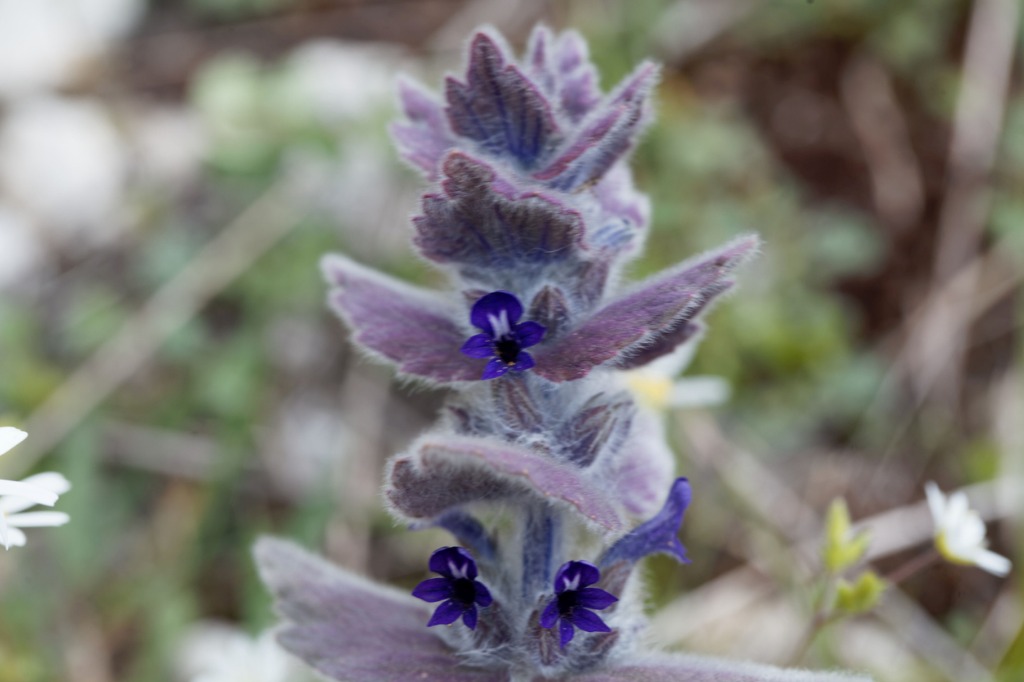Oriental bugle
(Ajuga orientalis)

Description
Ajuga orientalis (synonyms: Bugula obliqua) also known as Oriental bugle and Eastern bugle, is a herbaceous flowering plant native to the Eastern Mediterranean. It is found in the sandy, dry brushwood and lightly forested regions of the coast. It is usually evergreen, although it may be briefly deciduous in cold winters. This plant will grow to be 0.45 m (1 ft 6 in) wide and tall after 2–5 years of growing. The 6–30 cm (2.4–11.8 in) long flower stems are produced in spring and summer. They contain 4 to 12 flowers which are tube shaped,10–12 mm (0.39–0.47 in) long and cream/violet coloured. The calyx is 6–9 mm (0.24–0.35 in) long, with the top lip being cream coloured whilst the bottom being violet. The stamens are found inside. The grey-green leaves are oblong-elliptic, crenate-denate and usually 4–8 cm (1.6–3.1 in) long. This species, alongside most other Ajuga, claim to have medicinal effects, being used in traditional Turkish medicine. Ajuga also known as bugleweed, ground pine, carpet bugle, or just bugle, is a genus of 40 species annual and perennial herbaceous flowering plants in the Ajugeae tribe of the mint family Lamiaceae, with most species native to Europe, Asia, and Africa, but also two species in southeastern Australia. They grow to 5-50 cm tall, with opposite leaves.
Taxonomic tree:







